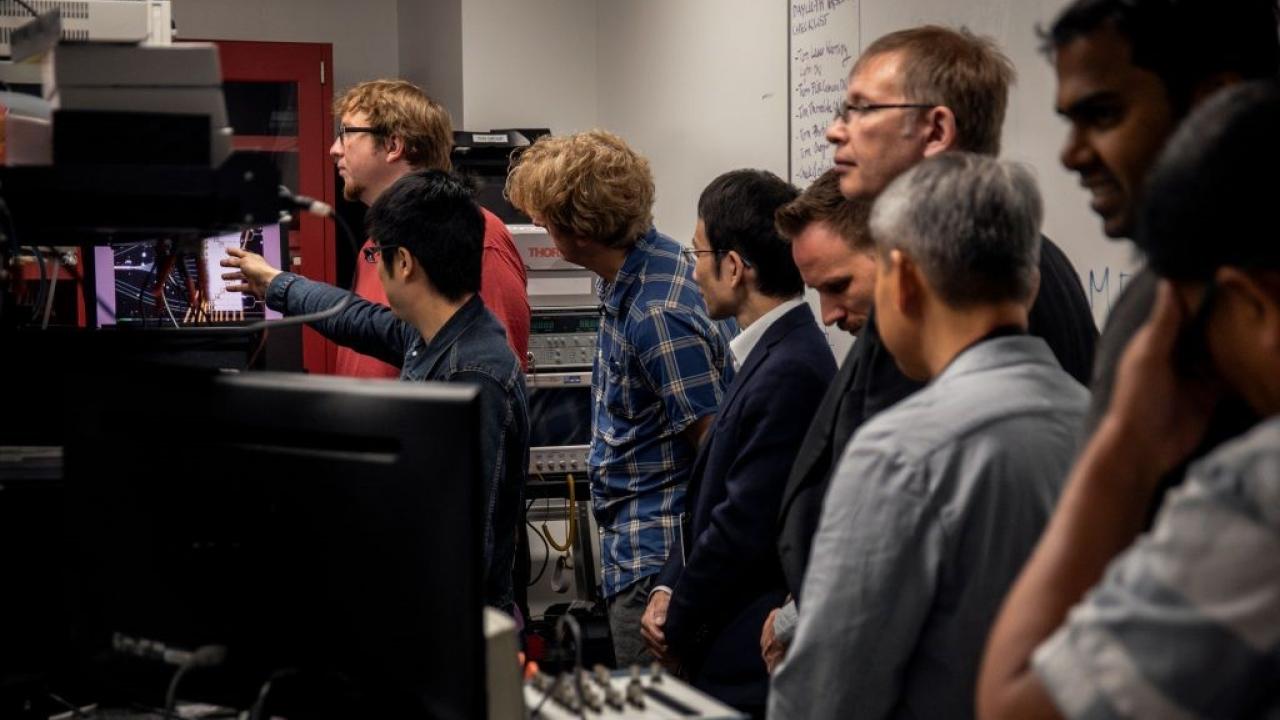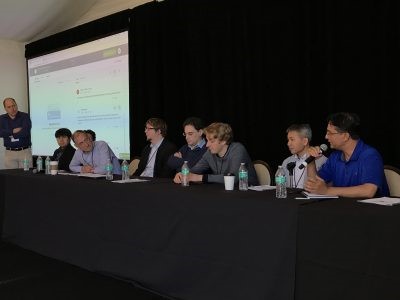
Ninth International Symposium on Ultrafast Photonic Technologies (ISUPT) and the Special Symposium on Silicon Photonics of the Future
The 9th International Symposium on Ultrafast Photonic Technologies (ISUPT) and the Special Symposium on Silicon Photonics of the Future (SSPhF) took place last week June 17-19 at the Silverado Resort and Spa in Napa. The ISUPT “is a bi-annual international event intended to provide a forum for researchers working on ultrafast photonic technologies including ultrahigh-speed optical communications, optical metrology, lasers, bio-medical technology, and advanced measurement technologies”, while the SSPhF addresses “innovations in silicon photonic technologies and heterogeneous/hybrid integrated circuits enabling new applications, in particular high-performance computing, high-capacity optical interconnects, coherent optical communications, ultrafast optical signal processing, optical networking/switching in the temporal, spectral, and spatial domains”. Both the ISUPT and SSPhF are distinguished by their program, hosting Invited and Plenary talks presented by world-renowned experts, and this year 110 people attended the event. Majority of the attendees came from Japan, and the other half from Europe, Australia, and the United States. The resort hosted the majority of the 3 day event, including plenary talks, technical sessions, and workshops. A UC Davis lab tour on the last day served as a field excursion- some pictures from the excursion can be found below.
 The guests arrived June 16 for an informal get-together, and June 17th the program kicked off. Technical sessions initiated the event, giving participants small breaks in between to peruse the exhibits organized by speakers. Dave Welch gave his Plenary Presentation this morning. Dave Welch is the Founder and Chief Innovation Officer as well as member of the Board of Directors at Infinera, Inc, an acclaimed supplier of intelligent transport network solutions and specializing in End-to-end Packet-Optical Transport Innovation. He holds 300 technical publications and over 130 patents, both in optical transmission technologies. His exposition topic “Disruption cycles for optical networks: Coherent today and tomorrow” was one of the most anticipated presentations of the event, discussing the “historical progression of optical networks and specifically coherent optical networks” in addition to future network changes.
The guests arrived June 16 for an informal get-together, and June 17th the program kicked off. Technical sessions initiated the event, giving participants small breaks in between to peruse the exhibits organized by speakers. Dave Welch gave his Plenary Presentation this morning. Dave Welch is the Founder and Chief Innovation Officer as well as member of the Board of Directors at Infinera, Inc, an acclaimed supplier of intelligent transport network solutions and specializing in End-to-end Packet-Optical Transport Innovation. He holds 300 technical publications and over 130 patents, both in optical transmission technologies. His exposition topic “Disruption cycles for optical networks: Coherent today and tomorrow” was one of the most anticipated presentations of the event, discussing the “historical progression of optical networks and specifically coherent optical networks” in addition to future network changes.
Day 2 followed the same schedule as the prior day, technical sessions filling most of the time and broken up by exhibition/coffee breaks. Starting off the day with a bang, at 9AM Shu Namiki delivered this day’s highly awaited presentation. Namiki received both his Masters and Doctorate degrees in Physics from Waseda University in Tokyo, Japan. More than 500 conference presentations, papers, books, chapters, articles, and patents hold his name as a co-author. He has served as Chair of the Executive Committee for a long-term national project titled “Vertically Integrated Center for Technologies of Optical Routing toward Ideal Energy Savings” (VICTORIES). Namiki’s presentation subject examined Photonic Layer Switching in the Post-Moore’s Law Era, addressing “expected roles and performances of optical switches in the above-mentioned context”. The innovative side of Namiki shows in the “review of the unique features and development status of silicon photonics based optical switches” and “impacts and challenges of introducing optical-layer switching into both wide area networks and data center networks”.
The third morning rounded off the final day sessions, presenting the last but not least of the anticipated speakers. Like the last two mornings, the day’s highlighted presentation commenced at 9AM. Ray Beausoleil, Senior Fellow and Senior Vice President at Hewlett Packard Enterprise (HPE), is a man of great merit. Among his achievements, including his over 145 patents, is the invention of the optical paper-navigation algorithms assimilated into the HP/Agilent optical mouse and HP’s large-format printers. Beausoleil led his plenary presentation on Large-Scale Integrated Photonics for Accelerated Communication and Computing, focusing on an accelerator- a coherent optical Ising machine – that “targets NP-hard problems that scale exponentially as a function of system size and are common to applications such as traffic flow optimization, supply chain management, airline scheduling, and DNA sequencing”.
Wednesday was the last day of the Symposium, but for those participants who elected into a lab tour, a Shuttle Bus delivered them to UC Davis. The lab tour involved approx 20 guests from NTT and NICT in Japan, HHI Frauhnofer Institute in Berlin and few more visitors from the US. The lab tours visited the NGNS Labs, the iNano Lab, the CNM rooms, and the NGNS Optical Systems Lab. We received positive feedback on the tour, and hope to host more in the future.
The ISUPT and SSPhF came to a close after the lab tour. The event ran successfully, comprising of some of the world’s leaders in their industries, great participation from attendees, and provided a great learning forum for researchers. We encourage everyone to look forward to attending the next Symposium!
